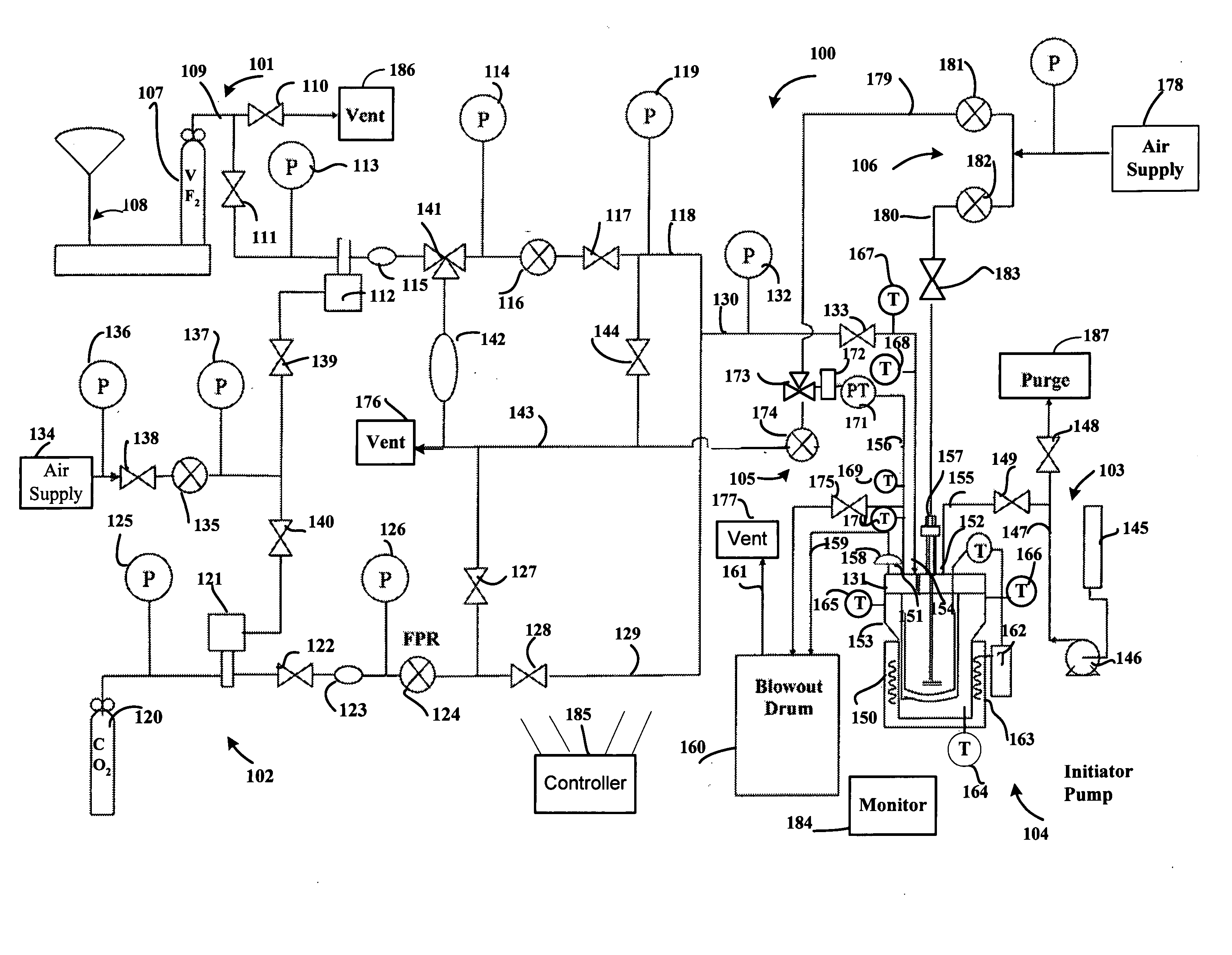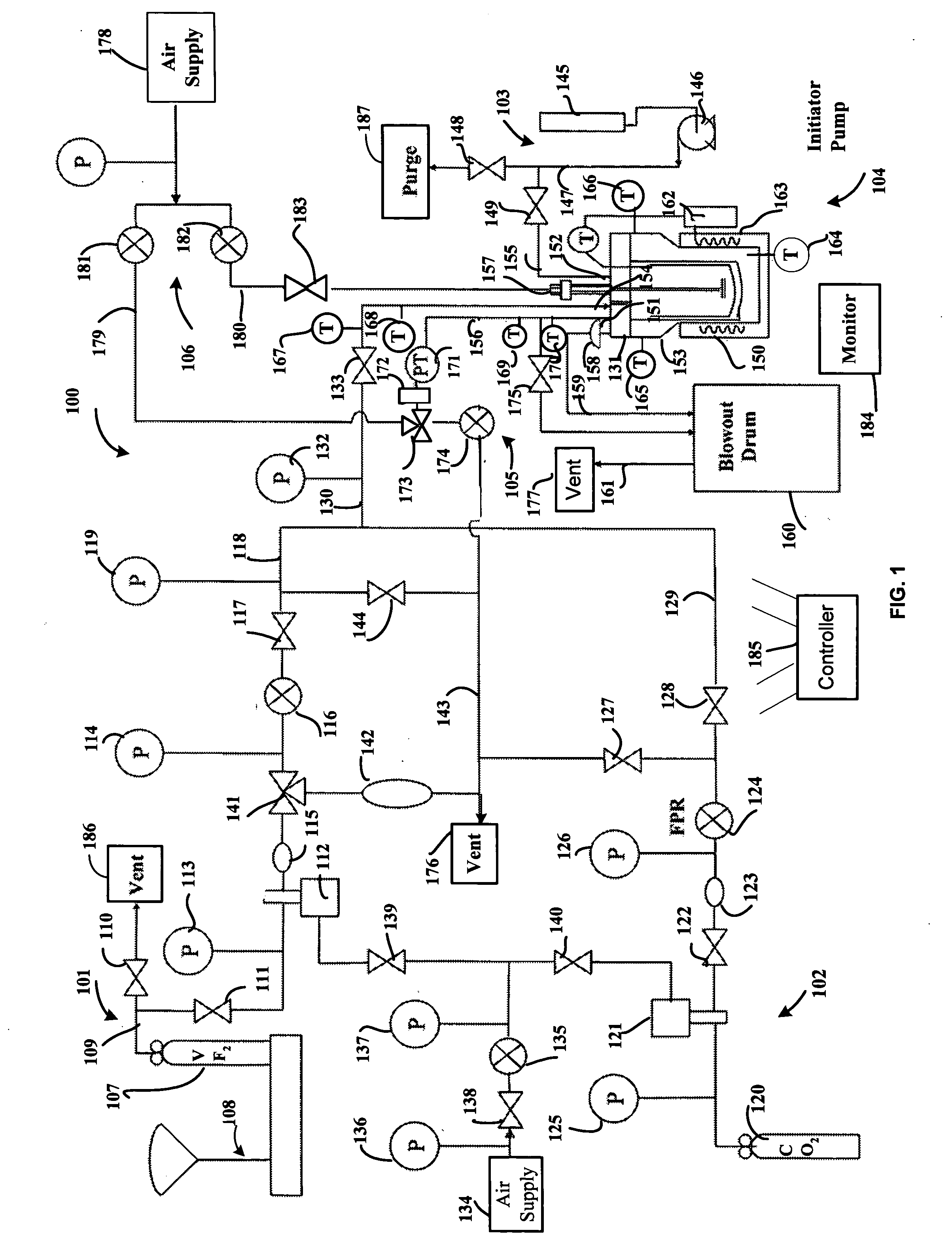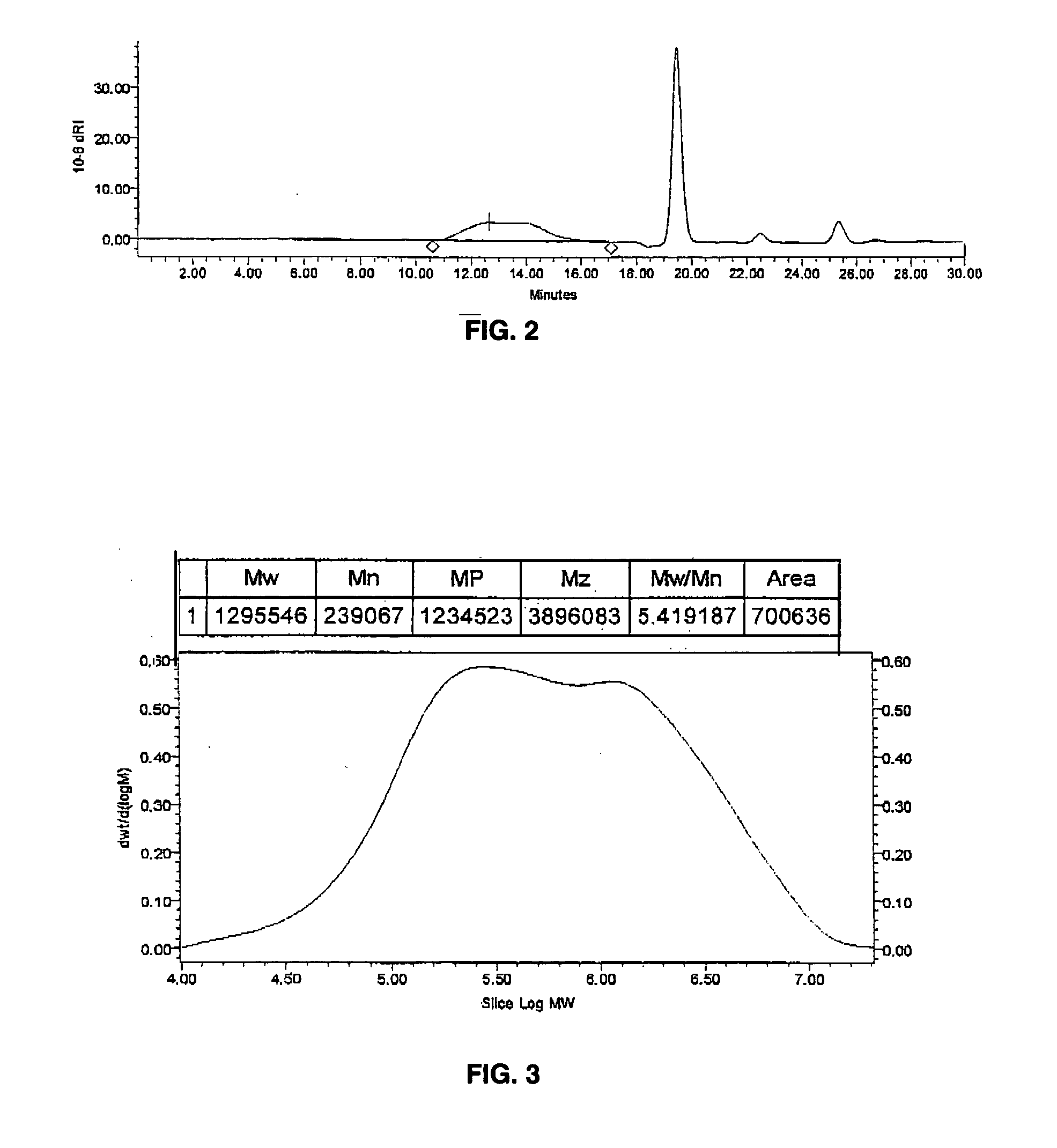Polymerization of vinylidenefluoride (VF2) in a supercritical fluid medium
a technology of vinylidenefluoride and reaction medium, which is applied in the direction of chemical recycling, chemical production, etc., can solve the problems of large amount of gel and microgel, high temperature runaway and pressure abort, and significant complications in heat and/or mass transfer control in the reactor, etc., to achieve high monomer or co-monomer loading, high molecular weight polymer, and low polydispersity
- Summary
- Abstract
- Description
- Claims
- Application Information
AI Technical Summary
Benefits of technology
Problems solved by technology
Method used
Image
Examples
working examples
[0089] The supercritical polymerization system 100 shown in FIG. 1 was used to polymerize VF2 in a variety of working examples, as described below. To commence each polymerization run, the reactor 131 was cleaned and bolted down. A pressure test was performed with CO2 at 600 psi. Oxygen from the reactor 131 was purged with CO2 by four pressurization-depressurization cycles from 600 psi to 25 psi. After that, the reactor 131 was pressurized with CO2 to the desired pressure condition and simultaneously heated to the reaction temperature. The magnetic drive impeller agitator 157 was turned on and maintained at a selected rate (e.g., 0, 150, 250, 500 rpm) throughout the reaction.
[0090] The VF2 line 118 exiting the gas booster 112 and connecting to the reactor feed valve 133 was purged by five pressurization-depressurization cycles from 400 psi to 25 psi before feeding of VF2 to the reactor 131. CO2 was added to the reactor 131 from the CO2 feed line 129. Thermowell 150 was energized to...
example 1
[0102] The operating temperature was 104° C. and the pressure was 3503 psi. The initiator used was tert-butyl peroxyacetate and the total loading quantity of the initiator was 0.09 ml (STP). Vinylidenefluoride concentration was 0.28 g / ml and carbon dioxide concentration was 0.31 g / ml for a total concentration of 0.59 g / ml inside the reactor. Agitation rate in the reactor was maintained at 500 rpm. The polymerization reaction was carried out for 180 minutes.
[0103] Polyvinylidenefluoride (PVDF) product was recovered, in quantity of 37.8 g. The weight average molecular weight (Mw) was approximately 1,300,000 g / mol with a polydispersity index of 5.4. FIG. 2 shows an auto-scaled chromatogram for this polymer product in DMSO solvent, and FIG. 3 the associated high-temperature gel permeation chromatography plot for this polymer product. FIG. 3 shows weight average molecular weight (Mw), number average molecular weight (Mn), peak average molecular weight (Mp), z-average molecular weight (M...
example 2
[0104] Operating conditions were identical to those of Example 1, except that the reaction time was 90 min and the agitation rate was 250 rpm. The operating temperature was 104° C. and the pressure was 3525 psi. The initiator used was tert-butyl peroxyacetate and the total loading quantity of the initiator was 0.09 ml (STP). Vinylidenefluoride concentration was 0.30 g / ml and carbon dioxide concentration was 0.31 g / ml for a total concentration of 0.61 g / ml inside the reactor.
[0105] Polyvinylidenefluoride (PVDF) product was recovered, in quantity of 9.8 g. The weight average molecular weight (Mw) was approximately 547,000 g / mol with a polydispersity index of 3.2. FIG. 4 shows an auto-scaled chromatogram for this polymer product in DMSO solvent, and FIG. 5 the associated high-temperature gel permeation chromatography plot for this polymer product. The melting temperature of the polymer was determined to be 165.5° C., the degree of crystallinity was 49.8 percent and the bulk density of...
PUM
| Property | Measurement | Unit |
|---|---|---|
| pressure | aaaaa | aaaaa |
| temperature | aaaaa | aaaaa |
| pressure | aaaaa | aaaaa |
Abstract
Description
Claims
Application Information
 Login to View More
Login to View More - R&D
- Intellectual Property
- Life Sciences
- Materials
- Tech Scout
- Unparalleled Data Quality
- Higher Quality Content
- 60% Fewer Hallucinations
Browse by: Latest US Patents, China's latest patents, Technical Efficacy Thesaurus, Application Domain, Technology Topic, Popular Technical Reports.
© 2025 PatSnap. All rights reserved.Legal|Privacy policy|Modern Slavery Act Transparency Statement|Sitemap|About US| Contact US: help@patsnap.com



